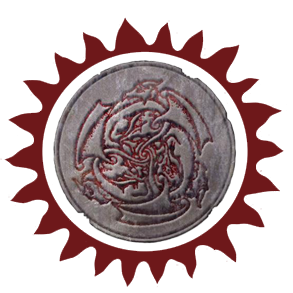Travel
The Travellers journey about Charted Space and beyond in many ways. This is an overview of the various game mechanics used to handle how this happens in the campaign with links to separate pages that detail particular details.
- Fuel for Ships - Details about where fuel can be found and how much it costs
- Jump Travel - Several things to consider when traveling from system to system
- Systems - links to the many systems that the Travellers encounter
- Using Maps - How to use the Traveller Sector and Subsector maps
- The Trojan Reach - Traveller Map, interactive mapping for Jump Travel
Travellers have almost infinite choices in how they move about a planet, a system, or across the Universe. From walking to grav vehicles, air rafts to system boats, adventure class starships to naval behemoths. Every type of vehicle will have a movement rating and energy cost.
The first thing that springs to mind for most Travellers is travel from system to system with some intra-system travel time as part of the mix. Jump Travel is the established way to travel the stars in a reasonable manner.
Travel between systems is arranged with Jump-drives. Each Jump takes one week, give or take, and consumes an amount of fuel equal to (excuse the math) 10% of the mass of the ship times the Jump number. So, for instance, a 200-ton Free Trader with a Jump-1 drive needs 20 tons of fuel. Free Traders are designed with a single fuel tank to contain the 20 tons needed for just one Jump.
The Jumping ship enters Jump space and exits Jump space at the destination system roughly one week later. Ships are generally designed to contain only enough Jump fuel for one Jump.
Jump Times
Jumps take one week, whether your ship is capable of Jump-1 or Jump-6 (the maximum Jump available to humans). Jump-2 ships, such as Far Traders and most Scout ships, can Jump two parsecs in one week. They can also Jump one parsec in a week, and many Jump-2 ships enjoy following the same Jump-1 routes as traders, enjoying the increased endurance which you would have if you only burned half the fuel in your ship's fuel tank.
Travel Times
Each Jump generally has two phases: the Jump itself, lasting about a week; and a week, roughly, spent in normal space in the destination system, trading while the ship refuels or maintenance takes place.
Sometimes, a ship arrives in a system with enough fuel to make a second Jump almost immediately. The turnaround time takes a few hours, while the Jump drive spins down from the Jump. This is not commonplace. Most ships spend at least a few days in normal space between Jumps.
System Pages
There are three types of System pages.
Brief System Notes is the information found on the Systems page directly. These are intended as a quick glance for what the Travellers need to know about a system they previously encountered. Contains brief notation about who the system is important to and why along with a brief description of the system. These are done for most systems encountered by the Travellers.
Full System Notes is the individual page for each System. This contains the brief system notes as well as the UWP (Universal World Profile) for the system, Jump Point information, and more details about the system and interesting Contacts and inhabitants that the Travellers care about. This type of page combined with the brief system notes is sufficient for most of the systems visited. These pages are created as the Travellers visit and spend time in the system. Much of these details come from the Traveller Wiki and are modified for OTU {Our Traveller Universe}.
Expanded System Page is the fully detailed notes for a full system notes System that go deeper into details about orbital mechanics, full workup of individual planets and moons; things that are typically Referee centered and presented for players and Travellers who want that level of detail. These come from working up the System to include details from the World Builders Handbook and other resources.
